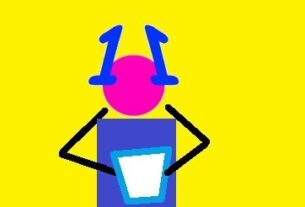Being both, animation and artificial intelligence lover, sometimes I do wonder isn’t Animation better medium to focus than synthetic media or deepfake? Though I admire most of machine learning and deep learning works & technologies, I can’t overlook the threats posed by deepfakes. In case, if you are not aware of deepfake terminology then let me tell you major Hollywood studios are already using this technique for their movies and you might have already seen those movies. For an example, in ‘Rogue One: A star Wars Story’, Disney used deepfake models for the late actor Carrie Fisher. In simple words, deepfakes are synthetic media in which a person in an existing video or voice is replaced with someone else’s and also those fake videos or audios look and sound like the real thing. In a research paper, recently published by Disney Research has explained how it has used progessive algorithm training, stabilisation technology and lighting effects to achieve convincing face-swapping result than ever.
Of course, there are some positive aspects of deepfakes, like in the field of education (example: talking famous paintings makes art classes more interesting), entertainment (example: brings back dead ccelebrities) or health devices (example: sythesize voices for those suffering from health ailments) etc. But the dark-side of deepfakes is more dangerous. Even in the emerging stage, deepfakes have already raised a set of legal and ethical concerns (like manipulation, national security, politics, adult content etc.) that the business community should take notice of. Just like human cloning banned, there is a need for the global governance, international response and policies for deepfakes. Some may think I am making extravagant points about deepfakes, but in absence of proper rules and regulations, they could do a lot worse.
On the other hand, animation is also the great medium for entertainment and education. However creating an effective animation video is a quite time consuming process till now. For example, it took roughly more than 10 days(of course, spending my leisure-time only) for the creation of below amateur 2D animation short by creating frame to frame. Now-a-days school kids can also create basic animation videos or games thanks to Scratch or Blockly.
In 2019, Edwin Catmull(co-founder of Pixar) and Pat Hanrahan won Turing Award, the Nobel Prize of Computing for their contributions to 3D Computer graphics. Even Disney’s ‘The Lion King’ remake is considered an animated movie and not live-action and was nominated in the animation category at the 77th Golden Globe Awards. AI was used to bring the virtual characters to life in the movie. Same way, AI-based advanced algorithms and training models can eliminate the need for time-consuming processes like drawing frame to frame and can replace expensive CG when it comes to digitally adding or removing objects. Some may argue that AI automation will replace animators, but I think AI is not going to replace them, but it powers them to do more with less and gives freedom from the tedious repetitive tasks.
Another Example : “First Boom to First Life” Imagination Animation Short
Entertainment industry doesn’t have to worry about animation characters as they never age or die. The interactive special animation videos will enhance the presentations and keep students engaged. 3D medical animation can benefits the healthcare industry in the areas of education, marketing and patient communication. Also at present, I don’t see any dangerous threat in AI in Animation and animation market is already established and growing faster than ever before. By stats, just global 3D animation market size was valued at $13.75 billion USD in 2018 and is expected to grow to $21 billion USD by 2022, at a Compound Annual Growth Rate (CAGR) of 11.9%. So I think focusing and encouraging AI in Animation is much better than concentrating on deepfakes. In future, I hope AI will enable the people to make their own high quality animation videos or games, even if they don’t know about animation but being interested to tell the good storylines.
Some Indian Animation Industry Stats
- Most subscribed animation YouTube channels in India as of September, 2020. As you can see nursery rhymes and kids songs is the most dominating segment.
1.) ChuChu TV
Notable Channels
ChuChu TV Nursery Rhymes & Kids Songs -> 39.8M subscribers
ChuChuTV Surprise Eggs Learning Videos -> 5.94M subscribers
ChuChuTV Hindi -> 5.78M subscribers
2.) Infobells
Notable Channels
Infobells Hindi -> 27M subscribers
infobells Tamil -> 17.9M subscribers
infobells Telugu -> 17.3M subscribers
infobells -> 11.5M subscribers
infobells Kannada -> 4.68M subscribers
3.) CVS 3D Rhymes & Kids Songs -> 24.9M subscribers
4.) Wow Kidz -> 18.8M subscribers
5.) Kids TV – Nursery Rhymes And Baby Songs -> 16.5M subscribers
6.) Green Gold -> 13.4M subscribers
7.) Videogyan – Nursery Rhymes & Songs For Kids -> 9.75M subscribers
8.) Chotoonz TV – Funny Cartoons for Kids -> 9.32M subscribers
9.) Kids Channel – Cartoon Videos for Kids -> 5.39M subscribers
10.) HooplaKidz – Official Nursery Rhymes Channel -> 4.25M subscribers
- ‘Chhota Bheem,’ which started by Green Gold Animation in 2008, is India’s most successful animation franchise, with a TV show, films and merchandise.
- Established in June 2015, Wowkidz is the largest Hindi cartoon channel on YouTube worldwide(As of September,2020). It is owned by Cosmos-Maya, best known for creating the animated sitcom ‘Motu Patlu‘, the Indian Laurel and Hardy.



